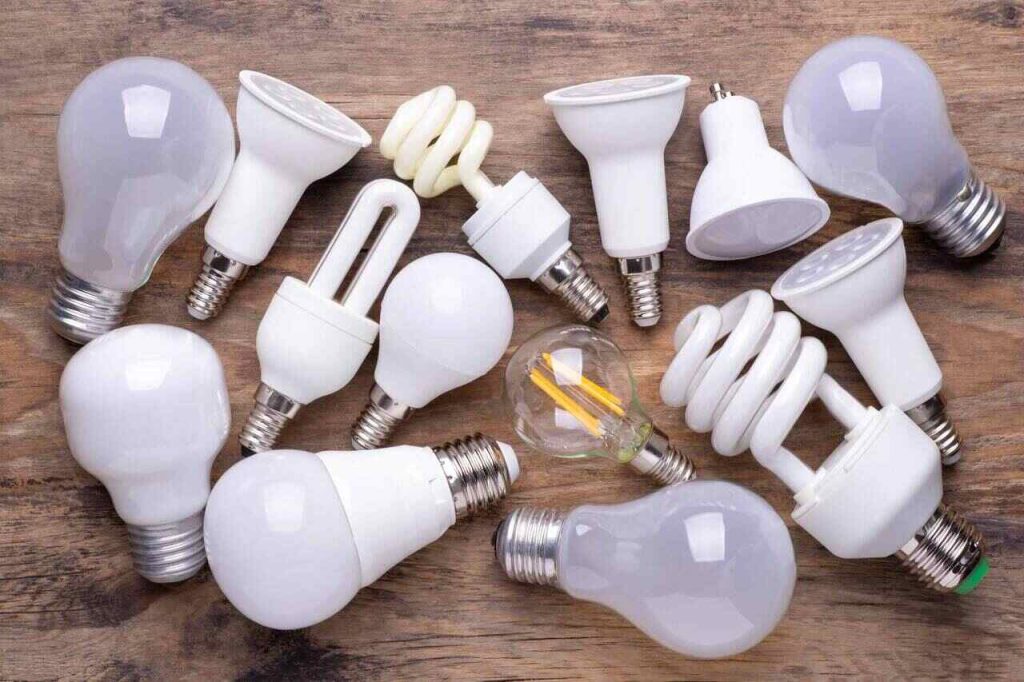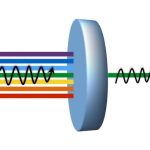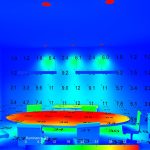“Arc lamp” or “arc light” is the general term for a class of lamps that produce light by an electric arc (also called a voltaic arc). The lamp consists of two electrodes, first made from carbon but typically made today of tungsten, which are separated by a gas. The type of lamp is often named by the gas contained in the bulb; including neon, argon, xenon, krypton, sodium, metal halide, and mercury, or by the type of electrode as in carbon-arc lamps. The common fluorescent lamp is actually a low-pressure mercury arc lamp

The mercury vapour lamp in construction is similar to sodium vapour lamp. It gives greenish blue colour light, which causes colour distortion. The efficiency is about 30-40 lumens per watt. These lamps (MA type) are manufactured in 250 and 400 W ratings for use on 200-250 Vac supply. Lamps of this type are used for general industrial lighting, railway yards, ports, work areas; shopping centers etc where greenish-blue colour ligh is not objectionable. Another type, which is manufactured in 300 and 500 W ratings for use on ac as well as dc supply mains is MAT type. This is similar to MA type except that it does not use choke as ballast. Lower wattage lamps, such as 80 and 125 W, are manufactured in a different design and using high vapour pressure of about 5-10 atmospheres. These are known as MB type lamps.
Incandescent lamp:
The incandescent light bulb, incandescent lamp or incandescent light globe produces light by heating a metal filament wire to a high temperature until it glows. The hot filament is protected from oxidation in the air with a glass enclosure that is filled with inert gas or evacuated. In a halogen lamp, filament evaporation is prevented by a chemical process that redeposit’s metal vapor onto the filament, extending its life. The light bulb is supplied with electrical current by feed-through terminals or wires embedded in the glass. Most bulbs are used in a socket which provides mechanical support and electrical connections. Incandescent bulbs are manufactured in a wide range of sizes, light output, and voltage ratings, from 1.5 volts to about 300 volts. They require no external regulating equipment, have low manufacturing costs, and work equally well on either alternating current or direct current. As a result, the incandescent lamp is widely used in household and commercial lighting, for portable lighting such as table lamps, car headlamps, and flashlights, and for decorative and advertising lighting. Some applications of the incandescent bulb use the heat generated by the filament, such as incubators, brooding boxes for poultry, heat lights for reptile tanks, infrared heating for industrial heating and drying processes, and the Easy-Bake Oven toy. This waste heat increases the energy required by a building’s air conditioning system

Gaseous discharge lamps:
Gas-discharge lamps are a family of artificial light sources that generate light by sending an electrical discharge through an ionized gas, i.e. a plasma. The character of the gas discharge critically depends on the frequency or modulation of the current: see the entry on a frequency classification of plasmas. Typically, such lamps use a noble gas (argon, neon, krypton and xenon) or a mixture of these gases. Most lamps are filled with additional materials, like mercury, sodium and/or metal halides. In operation the gas is ionized and free electrons, accelerated by the electrical field in the tube, collide with gas and metal atoms. Some electrons in the atomic orbitals of these atoms are excited by these collisions to a higher energy state. When the excited atom falls back to a lower energy state, it emits a photon of a characteristic energy, resulting in infrared, visible light, or ultraviolet radiation. Some lamps convert the ultraviolet radiation to visible light with a fluorescent coating on the inside of the lamp’s glass surface. The fluorescent lamp is perhaps the best known gas-discharge lamp.

Gas-discharge lamps offer long life and high efficiency, but are more complicated to manufacture, and they require auxiliary electronic equipment such as ballasts to control current flow through the gas. Due to their greater efficiency, gas-discharge lamps are replacing incandescent lights in many lighting applications.
Sodium Vapour Lamp:
Principally sodium vapour lamp consists of a bulb containing a small amount of metallic sodium, neon gas and two sets of electrodes connected to a pin type base. The lamp operates at a temperature of about 300°C and in order to conserve the heat generated and assure the lamp operating at normal air temperatures the discharge envelope is enclosed in special vacuum envelope designed for this purpose. The efficiency of a sodium vapour lamp under practical conditions is about 40-50 lumens/watt. Such lamps are manufactured in 45, 60, 85 and 140 W ratings. The average life is about 3000 hours and is not affected by voltage variations. The major application of this type of lamp is for highway and general outdoor lighting where colour discrimination is not required, such as street lighting, parks, rail yards, storage yards etc.

Fluorescent Lamp:
Employs transformation of UV radiation due to low pressure mercury vapor. Luminescent Powder in tubular vapor Lamps Enhances brilliancy of light.Radiation from Low Pressure Mercury Vapor (which is in UV region) is impinged on Luminescent Materials and re – radiated at longer wavelengths of visible spectrum. In a Glass Tube small drop of Mercury and small amount of Argon gas are placed for initiation of discharge. Pressure, voltage and current are so adjusted that 253.7 nm line is excited. This reradiates at longer wavelength. Typically a 40W lamp requires 2-3g of phosphors. Maximum sensitivity is around 250 – 260 nm. Various types of Fluorescent Lamps are:
1. Day Light Fluorescent Lamps- Average Noon Day Light. 6500°k suitable where demands are not exacting
2. Standard white Light – 3500°k general Lighting.
3. 4500°k white Lamp – between std. white Light & Day Light Lamp.
4. Soft white Lamp – Pinker Light. 25% lower light output than Std. white Lamp suitable for Residential lighting and Restaurants.
Dimension and Voltage depend on Luminous Efficacy, Brightness, Lumen Output and Lumen Maintenance. Reliable Starting is achieved by having preheated cathodes / hot cathode. Half the open circuit voltage should be used by the Lamp and the other half by the ballast. Lamp Voltage decides the arc length, bulb diameter and lamp current. Hot Cathode lamps operate at lower voltage < cold Cathode lamps. Typically cold cathodes have 70-100V drop at the cathode.



